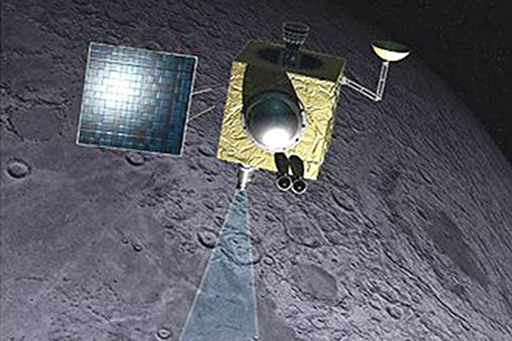2.7 The Chandrayaan-1 mission
India’s 2008 Chandrayaan-1 orbiting spacecraft carried with it a NASA instrument called the Moon Mineralogy Mapper or M3 (known as M-cubed). By observing the different absorption and reflection patterns of the Sun’s near-infrared radiation hitting the lunar surface, this instrument was designed to build up a detailed map of the minerals that make up the rocks on the Moon’s surface, and how these mineral compositions vary across the whole surface.
In 2009, it was announced that using this same technology, M3 and Chandrayaan-1 had made the first measurements of H2O and OH (hydroxyl), proving that the previously observed hydrogen was definitely in the form of water-ice. And interestingly, although by far the greatest concentrations of H2O and OH that M3 measured were at the lunar poles, smaller abundances were seen surrounding fresh or newly formed craters closer to the Moon’s equator, suggesting that trace amounts of OH and H2O may be present in other parts of the lunar surface, and are then concentrated and trapped in the coldest craters at the poles.

